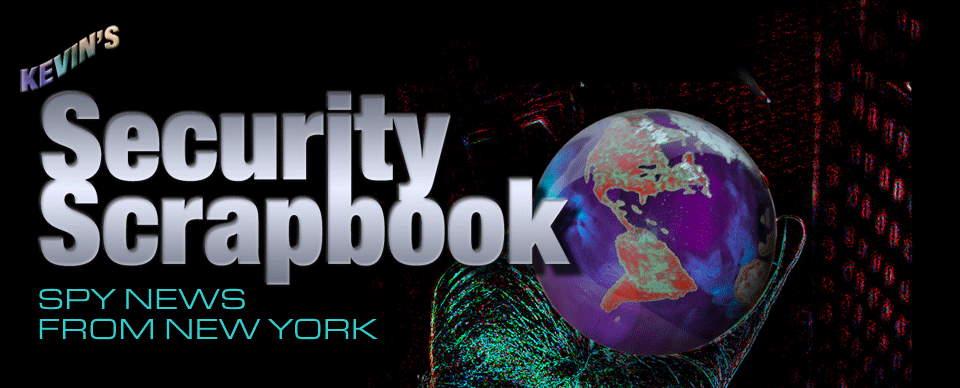The Emergency Broadcast System (EBS), a communications system which allows the government to commandeer radio and television broadcasting outlets to distribute emergency messages quickly, was tested this past week. The EBS started in 1963, and was preceded by a similar service called, CONELRAD. Electronic eminent domain has been around a long time.
Hold that thought.
"
SceneTap, a new app for smart phones, uses cameras with
facial detection software to scout bar scenes. Without identifying specific bar patrons, it posts information like the average age of a crowd and the ratio of men to women, helping bar-hoppers decide where to go. More than 50 bars in Chicago participate...
The spread of such technology — essentially, the democratization of surveillance — may herald the end of anonymity.
Those endeavors pale next to the photo-tagging suggestion tool introduced by
Facebook this year... “Millions of people are using it to add hundreds of millions of tags,” says Simon Axten, a Facebook spokesman. Other well-known programs like Picasa,
the photo editing software from Google, and third-party apps like
PhotoTagger, from
face.com, work similarly.
And this technology is spreading.
Immersive Labs, a company in Manhattan, has developed software for digital billboards using cameras to gauge the age range, sex and attention level of a passer-by.
Using off-the-shelf facial recognition software, researchers at Carnegie Mellon University were recently able to identify about a third of college students who had volunteered to be photographed
for a study — just by comparing photos of those anonymous students to images publicly available on Facebook."
Have you connected the dots yet?
Here is another clue...
CALEA, a law passed in 1994, "
To amend title 18, United States Code, to make clear a telecommunications carrier's duty to cooperate in the interception of communications for Law Enforcement purposes, and for other purposes." Telecommunications yet another type of mass communications device which may now be commandeered by government.
Internet connected, facial recognition systems are rapidly becoming mainstream mass communications technology, just like radio, TV and telephones. It only makes sense that this too will be commandeered. The question is, will it be commandeered like EBS to broadcast emergency messages, or will it be commandeered like CALEA to be used for surveillance? Both, perhaps?
So far, the benefits of letting government commandeer mass communications (verses the abuse potential) make the gambit worthwhile. For this, we thank our legal system. It is time for them to walk the high wire again. Please, get us through this technical conundrum with grace and balance one more time.
The noose tightens... "You can run, but you can't hide."
Should this all come to pass (it will), there may be some interesting social outcomes. Just as mass communications pulls society closer together, mass surveillance capabilities like CALEA, license plate readers, and the multitude of facial recognition surveillance systems may push people apart. Imagine a world where the density of: commercial video billboards and kiosks; business surveillance cameras; and government street/toll booth cameras, in urban areas, squeezes criminals into the suburbs and beyond.
How best to take advantage of the changes in our brave new world?
~ Kevin
 China's war on jaywalking went to the next level last spring when AI-based facial recognition systems were integrated into some crosswalks, to punish jaywalkers by squirting them with water, sending them texts warning them about legal consequences of jaywalking, and/or publicly shaming them by displaying their pictures and names on large digital billboards.
China's war on jaywalking went to the next level last spring when AI-based facial recognition systems were integrated into some crosswalks, to punish jaywalkers by squirting them with water, sending them texts warning them about legal consequences of jaywalking, and/or publicly shaming them by displaying their pictures and names on large digital billboards.
































